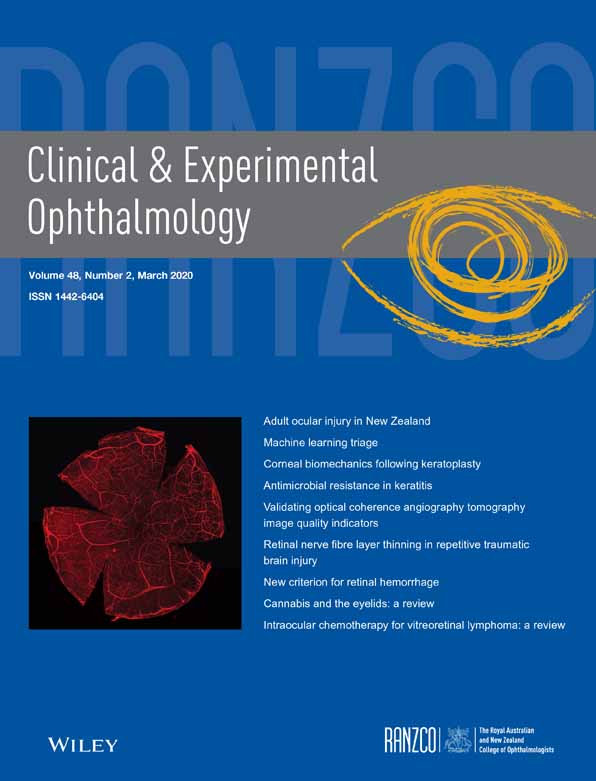Clinical validation of the RTVue optical coherence tomography angiography image quality indicators
Abstract
Importance
All automated image quality indicators for en face optical coherence tomography angiography (OCTA) images require gold standard validation for determining optimum thresholds.
Background
A manual grading system (gold standard) for OCTA images was validated and compared to two automated image quality indicators: signal strength index (SSI) and scan quality index (SQI) generated by different software versions of the Optovue OCTA device.
Design
Retrospective cross-sectional study.
Participants
A total of 52 eyes of 52 healthy individual and 77 eyes of 51 patients with retinal vascular diseases.
Methods
A total of 129 OCTA images of the superficial vascular plexus were graded manually by three independent examiners. Each image was assigned grades 1 to 4 (1-2, unacceptable; 3-4, acceptable) masked to the software-generated quality indicators.
Main Outcome Measures
Inter-grader agreement and comparison of the utility of SSI and SQI in discriminating between acceptable and unacceptable OCTA images.
Results
There was a substantial agreement between the three graders (κ = 0.63). Mean SSI and SQI was significantly different between acceptable and unacceptable images (P < .001). SQI outperformed SSI in separating acceptable from unacceptable images (areas under the receiver operating characteristic curve: 0.87 vs 0.80) and the optimum cut-off was ≥7 for SQI and ≥70 for SSI for acceptable images. Up to 30% of images with quality indicators reaching the optimum SQI and SSI cut-off thresholds still had unacceptable quality on manual grading. Unacceptable images were found in 33% and 66% of healthy and diseased eyes, respectively.
Conclusions and Relevance
SQI is closely related to manual grading but we caution reliance on the optimized threshold to determine image quality. SQI is superior to SSI in discriminating between acceptable and unacceptable images.
CONFLICT OF INTEREST
None declared.




